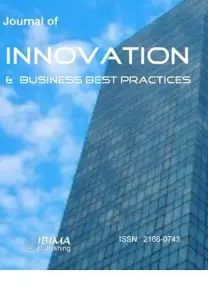Some general limitations can be defined for the work. First, the use of patent data as a proxy of technological activities might underestimate the phenomenon, since not all R&D efforts will result in an application for a patent. Second, the use of patent data for investigating the adoption of open innovation could be questionable, since not all collaborations will be captured by co-patenting activities (Hagedoorn et al., 2003). Furthermore, the research is limited to only one industry.
Further research will be addressed to widening our sample of investigation, by analysing different industries and making comparisons among innovation strategies of companies with different features. In order to evaluate the overall impact of open innovation adoption, we plan to enforce our framework introducing other open models already studied by scientific literature, like licensing, trading and incorporation (Michelino et al., 2014a). Correlations between strategic behaviours detected through our framework, context features (e.g., firm’s age and dimension) and financial performance indicators are under investigation. Finally, we are trying to match the openness indicator provided by this framework with the openness ratios measuring the pecuniary dimension of open innovation (Michelino et al., 2014b).
References
1. Acs, Z.J. and Audretsch, D.B. (1989), “Patents as a measure of innovative activity”, Kyklos, Vol. 42, No. 2, pp. 171-180.
2. Ahuja, G. and Lampert, C.M. (2001), “Entrepreneurship in the large corporation: a longitudinal study of how estabilished firms create breakthrough inventions”, Strategic Management Journal, Vol. 22, No. 6, pp. 521-543.
3. Al-Ashaab, A., Flores, M., Doultsinou, A. and Magyar, A. (2011), “A balanced scorecard for measuring the impact of industry-university collaboration”, Production Planning & Control, Vol. 22, No. 5-6, pp. 554-570.
4. Belderbos, R. (2001), “Overseas innovation by Japanese firms: an analysis of patent and subsidiary data”, Research Policy, Vol. 20, No. 2, pp. 313-332.
5. Belderbos, R., Faems, D., Leten, B. and Van Looy, B. (2010), “Technological activities and their impact on the financial performance of the firm: exploitation and exploration within and between firms”, Journal of Product Innovation Management, Vol. 27, No. 6, pp. 869-882.
6. Chakrabarti, A.K. (1991), “Competition in high technology: analysis of patents of US, Japan, UK, West Germany, and Canada”, IEEE Transactions of Engineering Management, Vol. 38, No. 1, pp. 78-84.
7. Chesbrough, H.W. (2006) Open Business Models: How to Thrive in the New Innovation Landscape, Harvard Business School Press, Boston.
8. Dess, G.G. and Beard, D. (1984), “Dimensions of organizational task environments”, Administrative Science Quarterly, Vol. 29, No. 1, pp. 52-73.
9. Dewar, R.D. and Dutton, J.E. (1986), “The adoption of radical and incremental innovations: an empirical analysis”, Management Science, Vol. 32, No. 11, pp. 1422-1433.
10. Dittrich, K. and Duysters, G. (2007), “Networking as a means to strategy change: the case of Open Innovation in Mobile Telephony”, Journal of Product Innovation Management, Vol. 24, No. 6, pp. 510-521.
11. Ettlie, J.H., Bridges, W.P. and O’Keefe, R.D. (1984), “Organizational strategy and structural differences for radical vs incremental innovation”, Management Science, Vol. 30, No. 6, pp. 682-695.
12. Frietsch, R. and Grupp, H. (2006), “There is a new man in town: the paradigm shift in optical technology”, Technovation, Vol. 26, No. 1, pp. 463-472.
13. Griliches, Z. (1990), “Patent statistics as economic indicators: a survey”, Journal of Economic Literature, Vol. 18, No. 4, pp. 661-1707.
14. Grupp, H. (1992) Dynamics of Science-Based Innovation, Springer, Berlin.
15. Hagedoorn, J., Kranenburg, H. and Osborn, R.N. (2003), “Joint patenting amongst companies – exploring the effects of inter-firm R&D partnering and experience”, Managerial and Decision Economics, Vol. 24, No. 2-3, pp. 71-84.
16. Hanel, P. (2006), “Intellectual property rights business management practices: a survey of the literature”, Technovation, Vol. 26, No. 8, pp. 895-931.
17. JRC (2012), The 2012 EU Industrial R&D Investment Scoreboard. Joint Research Centre, Directorate General Research and Innovation, European Commission.
18. Kim, C. and Song, J. (2007), “Creating new technology through alliances: An empirical investigation of joint patents”, Technovation, Vol. 27, No. 8,pp. 461-470.
19. Lo Storto, C. (2006), “A method based on patent analysis for the investigation of technological innovation strategies: The European medical prostheses industry”, Technovation, Vol. 26, No. 8, pp. 932-942.
20. Ma, Z., and Lee, Y. (2008), “Patent application and technological collaboration in inventive activities: 1980-2005”, Technovation, Vol. 28, No. 6, pp. 379-390.
21. March, J. (1991), “Exploration and exploitation in organizational learning”, Organization Science, Vol. 2, No. 1, pp. 71-87.
22. Michelino, F., Cammarano, A., Lamberti, E. and Caputo, M. (2014a), ‘Open models for innovation of leading companies in high competitive industries,’ Proceedings of the 23rd International Business Information Management Association Conference – IBIMA. 13-14 May 2014. Valencia, Spain.
23. Michelino, F., Lamberti, E., Cammarano, A. and Caputo, M. (2014b), ‘Measuring open innovation in the bio-pharmaceutical industry,’ Creativity and Innovation Management (Article in Press).
24. Munson, F.C. and Pelz, D.C. (1979), The Innovating Process: A Conceptual Framework, Working paper, University of Michigan.
25. Pavitt, K. (1984), “Sectorial patterns of technical change: towards a taxonomy and a theory”, Research Policy, Vol.13, No. 6, pp. 343-373.
26. Sakata, J., Suzuki, K. and Hosoya, J. (2009), “The analysis of research and development efficiency in Japanese companies in the field of fuel cells using patent data”, R&D Management, Vol. 39, No. 3, pp. 291-304.
27. Suzuki, J. and Kodama, F. (2004), “Technology diversity of persistent innovators in Japan: two case studies of large Japanese firms”, Research Policy, Vol. 33, No. 3, pp. 531-549.














